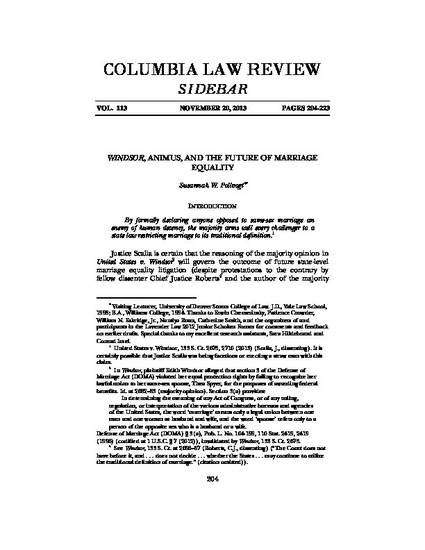
Article
Windsor, Animus, and the Future of Marriage Equality
Columbia L. Rev. Sidebar
(2013)
Abstract
In United States v. Windsor, the Supreme Court declared that animus remains a relevant concept in the Court’s equal protection jurisprudence and confirmed that proving the presence of animus is a viable strategy for winning a marriage equality challenge. And yet the Court failed to clarify the contours of the concept, leaving advocates, as well as lower federal and state courts, without guidance on how to articulate and apply the doctrine. Depending on how one answers the three questions posed above, it is possible to assemble several models of animus. Combine this with the variation in the structure and history of state law marriage regimes, and it is easy to imagine multiple, disparate outcomes in future marriage equality litigation—quite to the contrary of Justice Scalia’s prediction.
To elaborate on this problem, Part I will explain the role of animus in the Court’s equal protection jurisprudence, with an emphasis on the persistent uncertainty surrounding the doctrine’s precise contours. Part II will identify the manner in which Windsor perpetuated rather than alleviated this doctrinal uncertainty. Part III will examine the consequences of applying different models of animus to different types of state-level marriage regimes. The Essay concludes that the future of state-level marriage equality litigation is very much an open question due to the uncertainty surrounding the doctrine of unconstitutional animus.
Disciplines
Publication Date
2013
Citation Information
Susannah Pollvogt. "Windsor, Animus, and the Future of Marriage Equality" Columbia L. Rev. Sidebar Vol. 113 (2013) p. 204 Available at: http://works.bepress.com/susannah-pollvogt/4/
